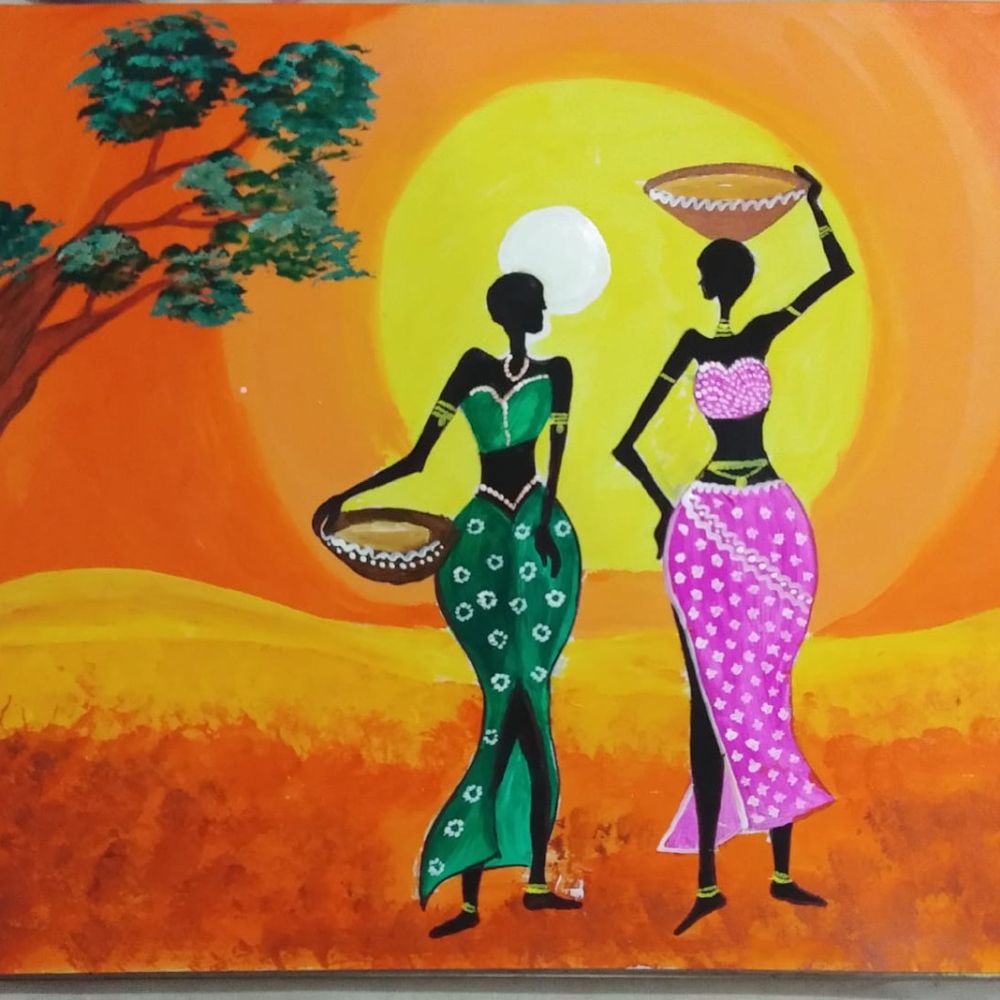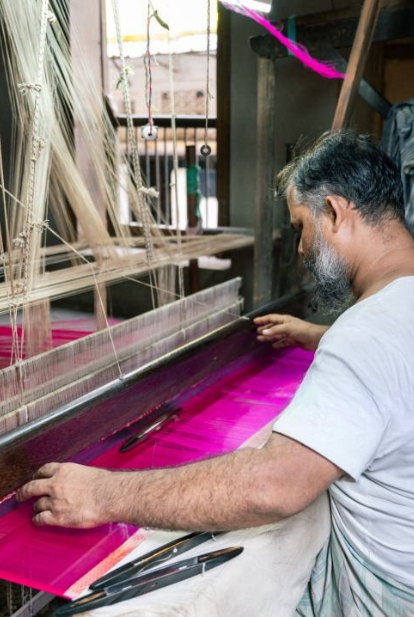Warli painting is a traditional tribal art form that has been practiced for centuries by the Warli community, a tribe indigenous to the Sahyadri Hills of Maharashtra, India. This art, known for its simplicity and elegance, captures the essence of rural life, reflecting the Warli people's deep connection with nature and their cultural heritage.
This art form stands out for its minimalistic design and monochromatic palette, yet it conveys profound stories about the everyday life and spiritual beliefs of the community. Warli paintings are much more than decorative; they are an expression of life and a medium to preserve tribal traditions.
History and Origin of Warli Painting
The roots of Warli painting date back to around 2500 BCE, making it one of the oldest art forms in India. Historically, the Warli tribe used this art to adorn the walls of their clay huts, primarily during special occasions like weddings, harvest festivals, and religious ceremonies.
Despite its ancient origins, Warli art remained unknown to the outside world until the 1970s when it was introduced to the global stage. This introduction marked the beginning of its recognition as a unique tribal art form, not only in India but also internationally.
Distinctive Features of Warli Painting
1. Geometric Simplicity
The most remarkable feature of Warli painting is its use of geometric shapes. Circles, triangles, and lines are used to represent human figures, animals, trees, and natural elements. For example:
- Circles represent the sun, moon, or other celestial elements.
- Triangles symbolize mountains or trees.
- Lines are used to connect elements and create intricate patterns.
This simplicity makes the art universally appealing and timeless.
2. Monochromatic Colors
Warli paintings are traditionally made using white rice paste on a dark mud surface. The dark brown background is prepared by smearing a mixture of cow dung and mud on the walls of their homes. This contrast between white and brown adds an earthy charm to the art.
3. Storytelling Through Art
Warli paintings are not random designs; they narrate stories of everyday life, rituals, and nature. Popular themes include:
- Farming scenes showcasing plowing, sowing, and harvesting.
- Tarpa dance, a group dance performed during celebrations.
- Hunting scenes that illustrate the tribe’s relationship with the forest.
- Marriage ceremonies, depicted with symbolic motifs like the central Tarpa drum or animals.
Every piece of Warli art is a vivid reflection of their life and environment, making it both personal and communal.
4. No Deities or Mythology
Unlike many Indian art forms, Warli painting doesn’t focus on gods or mythological stories. Instead, it celebrates the relationship between humans and nature, highlighting themes of coexistence, harmony, and sustainability.
Cultural and Spiritual Significance
Warli painting is more than an art form; it is deeply rooted in the tribe's traditions and values. Each painting serves a purpose, whether it’s to mark a festive occasion, narrate a story, or symbolize an important life event.
One of the most significant uses of Warli art is during marriage ceremonies, where a special design called “Lagna Chowk” is created on the walls as a blessing for the couple. It is believed that these paintings invoke prosperity and happiness.
Additionally, Warli paintings act as a medium to preserve tribal wisdom and pass it on to future generations. They are a testament to the Warli tribe’s respect for nature and their understanding of sustainable living.
Modern Adaptation of Warli Painting
In recent years, Warli painting has gained global recognition and evolved from a tribal tradition to a celebrated art form. Artists and designers are now incorporating Warli motifs into various products such as:
- Home décor: Wall art, lampshades, and cushion covers.
- Fashion: Sarees, scarves, and handbags.
- Stationery: Diaries, notebooks, and bookmarks.
This adaptation has created opportunities for Warli artists to earn a livelihood while preserving their art. Moreover, it has helped spread awareness about India’s rich tribal heritage.
Sustainability and Warli Art
Warli painting is inherently eco-friendly. The materials used—mud,
cow dung, and rice paste—are natural and sustainable. This art emphasizes living in harmony with nature, a message that resonates strongly in today’s world.
The promotion of Warli art not only supports the artists but also aligns with the principles of sustainable development and cultural preservation.
Challenges Faced by Warli Art
Despite its popularity, Warli art faces challenges such as:
- Commercial Exploitation: Mass production of Warli-inspired products often fails to benefit the original artists.
- Loss of Tradition: Younger generations are moving away from traditional practices, risking the loss of this cultural heritage.
To address these challenges, organizations and individuals are working to ensure that Warli artists receive fair compensation and that the authenticity of the art is preserved.
Conclusion
Warli painting is not just an art form but a way of life for the Warli tribe. Its simplicity, beauty, and cultural significance have made it a timeless treasure. As we celebrate Warli art in modern contexts, it is essential to honor its roots and ensure that the artists and their traditions continue to thrive.
By embracing Warli painting, we not only support tribal artists but also reconnect with the values of simplicity, sustainability, and respect for nature. This ancient art form is a reminder that beauty lies in simplicity and that our heritage is worth preserving for future generations.



